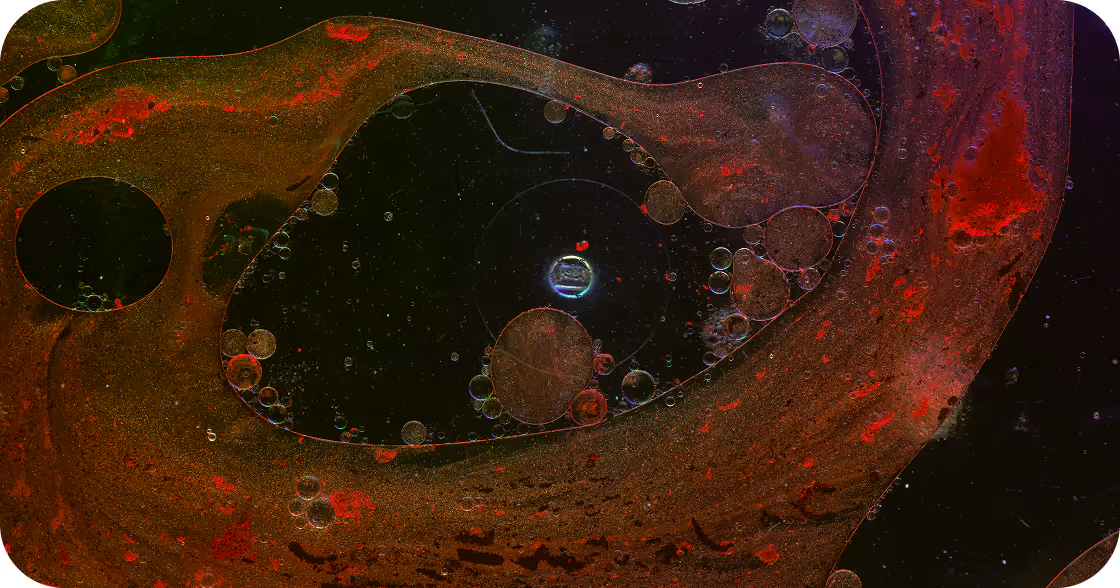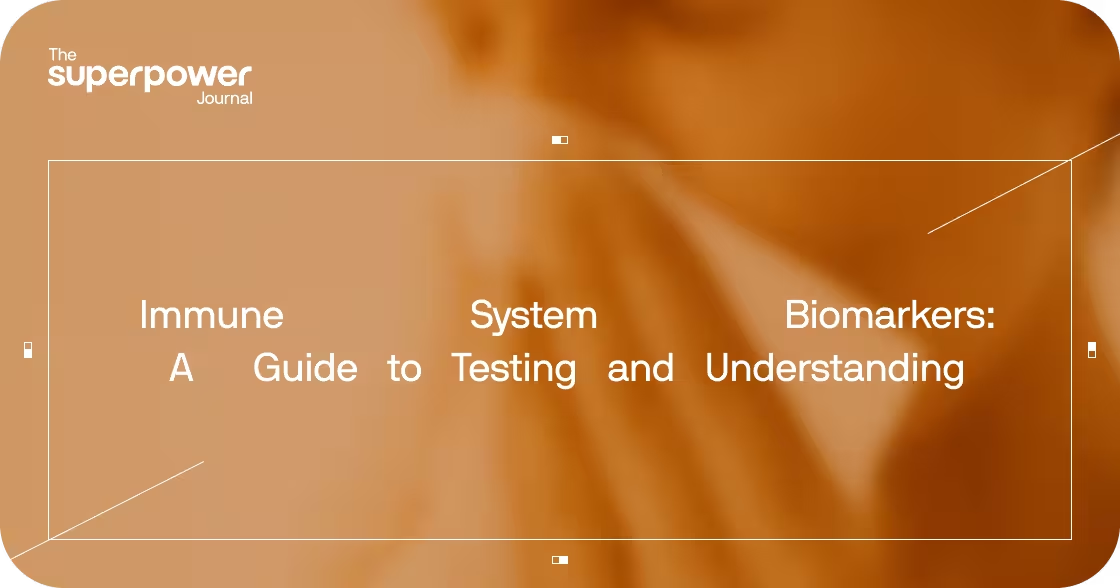Why kidney dysfunction matters
Chronic kidney disease (CKD) is far more common than many realize. In the United States, an estimated 37 million adults have CKD, yet about 90% remain undiagnosed¹. Because the kidneys can adapt to early damage, symptoms often appear late. During this silent phase, important physiological changes—such as increased blood pressure, vascular stress, and impaired regulation of fluid and minerals—are already underway².
Kidney dysfunction is not just a renal problem; it affects multiple systems. Declining filtration capacity alters blood pressure control, increases cardiovascular disease risk, weakens bone and mineral metabolism, and worsens metabolic health² ³. Even mild kidney impairment is associated with higher risk of hospitalization, cardiovascular events, and premature mortality⁴. Recognizing kidney dysfunction early—through biomarkers—shifts care from late-stage intervention to prevention.
Systems biology framing: kidneys in conversation with the body
The kidneys are more than filtration organs. They function as endocrine and regulatory hubs that shape cardiovascular, skeletal, metabolic, and neurological health.
- Cardiovascular system: The kidneys regulate blood pressure via sodium balance and the renin–angiotensin–aldosterone system (RAAS). Impairment contributes to hypertension, vascular stiffness, and progression of cardiorenal syndrome² ⁵.
- Metabolic system: The kidneys contribute to glucose homeostasis and insulin sensitivity. Diabetes is the leading cause of CKD, while CKD further worsens glucose regulation and increases cardiovascular risk² ⁶.
- Skeletal system: By converting vitamin D to its active form and maintaining phosphate balance, kidneys regulate bone and mineral metabolism. CKD causes secondary hyperparathyroidism, bone fragility, and vascular calcification³ ⁵.
- Immune system: CKD is a pro-inflammatory state, driven by endothelial dysfunction and oxidative stress² ⁷. Albuminuria, for instance, reflects not only kidney damage but systemic vascular injury⁸.
- Neurological system: Retention of uremic toxins in advanced CKD impairs cognitive function. CKD, including its earlier stages, is consistently associated with greater risk of dementia and cognitive decline⁷ ⁹.
This systems approach explains why kidney biomarker testing is important beyond dialysis prevention. Monitoring biomarkers reveals risks for cardiovascular disease, bone fragility, diabetes complications, and neurocognitive decline — all central to healthy aging.
What kidney health biomarkers are
Kidney biomarkers are laboratory measures that track filtration, injury, and regulatory balance. The main categories are:
- Filtration biomarkers: Creatinine, estimated glomerular filtration rate (eGFR), cystatin C.
- Damage biomarkers: Urine albumin-to-creatinine ratio (UACR).
- Functional/regulatory biomarkers: Electrolytes, phosphate, uric acid, parathyroid hormone (PTH), vitamin D.
Using a panel of these tests provides a more complete picture than relying on a single biomarker⁶ ⁸.
Key kidney biomarkers explained
Serum creatinine
Creatinine is a muscle metabolism byproduct cleared by the kidneys. When filtration function declines, creatinine rises. Interpretation is complicated by muscle mass, diet, sex, and age⁶ ¹⁰.
Estimated glomerular filtration rate (eGFR)
eGFR, calculated using creatinine (and sometimes cystatin C), translates lab values into kidney filtration efficiency. A persistent eGFR below 60 mL/min/1.73 m² for three months or more is diagnostic of CKD¹ ⁶.
Cystatin C
Cystatin C is produced by all nucleated cells and filtered by the kidneys with fewer non-renal influences than creatinine. It improves accuracy of eGFR when used in combination with creatinine and independently predicts cardiovascular events and mortality¹¹.
Blood urea nitrogen (BUN)
BUN reflects urea concentration, a byproduct of protein metabolism. Elevated BUN may indicate kidney dysfunction, dehydration, or high dietary protein, but interpretation is less specific than creatinine or eGFR¹⁰.
Urine albumin-to-creatinine ratio (UACR)
Albuminuria signals early kidney injury. UACR ≥30 mg/g identifies increased risk of CKD progression and cardiovascular disease³ ⁶ ⁸. It is one of the most sensitive early markers.
Electrolytes (sodium, potassium, bicarbonate, phosphate)
The kidneys maintain electrolyte balance. Abnormal values, such as hyperkalemia or metabolic acidosis, are late indicators of impaired regulation and strongly linked to adverse outcomes¹².
Uric acid
Elevated uric acid levels can result from reduced renal clearance. Although causal links remain debated, high uric acid is consistently associated with hypertension, CKD progression, and cardiovascular events¹³.
Parathyroid hormone (PTH) and vitamin D
Kidneys activate vitamin D to regulate calcium–phosphate metabolism. CKD leads to secondary hyperparathyroidism, bone fragility, and vascular calcification, key contributors to morbidity in advanced CKD⁵ ¹².
Normal vs. optimal ranges
Population reference ranges reflect averages, while prognosis often depends on subtle deviations within those ranges. For example, even UACR values at the high end of “normal” (<30 mg/g) are associated with higher cardiovascular risk⁸. Similarly, mild eGFR decline (60–89 mL/min/1.73 m²) predicts higher morbidity, particularly in older adults⁴.
What imbalanced biomarker levels mean
- Elevated creatinine or reduced eGFR: Possible CKD, acute kidney injury, or dehydration¹ ⁶.
- High cystatin C: Linked with cardiovascular disease and mortality¹¹.
- Increased UACR: Strong predictor of kidney disease progression and cardiovascular outcomes⁸.
- Electrolyte abnormalities: Hyperkalemia, acidosis, and hyperphosphatemia signify advanced dysfunction with high mortality risk¹².
- High phosphate and PTH: Associated with vascular calcification and skeletal disease⁵ ¹².
Kidney biomarkers and longevity
Kidney biomarkers track processes central to aging:
- Oxidative stress and vascular injury: Albuminuria reflects endothelial damage, linking kidneys to cardiovascular aging⁷ ⁸.
- Metabolic and mitochondrial stress: CKD requires high energy turnover, and impaired kidney function signals systemic metabolic inefficiency².
- Bone-mineral regulation: Disturbances in vitamin D and phosphate accelerate vascular and skeletal aging³ ⁵.
Thus, kidney biomarkers not only diagnose renal disease but also identify individuals at increased risk for age-related multi-system decline.
Supporting healthy kidney biomarkers
Nutrition
- Adequate hydration supports kidney clearance and stable creatinine values¹⁰.
- Limiting sodium lowers blood pressure and reduces CKD risk progression⁶.
- Restricting dietary phosphate—particularly from processed foods—helps mitigate mineral imbalance in CKD¹².
- Good glucose control prevents microalbuminuria and slows progression in diabetes-related kidney disease⁶.
Exercise
- Regular physical activity lowers blood pressure and improves insulin sensitivity, reducing CKD risk⁶ ⁹.
- Exercise may also improve vascular function, indirectly protecting renal health¹⁴.
Sleep
- Observational data link poor sleep quality with higher CKD incidence, likely via blood pressure and metabolic effects⁹. Ensuring adequate sleep supports renal and cardiovascular resilience.
Metabolic health
- Preventing insulin resistance and managing diabetes are primary interventions for kidney biomarker stability, as diabetes remains the leading CKD cause² ⁶.
Life stage considerations
- Pregnancy: GFR rises during pregnancy, lowering creatinine. New-onset proteinuria or hypertension may indicate preeclampsia, not only CKD¹⁵.
- Aging: eGFR declines with age, but albuminuria is often a stronger predictor of adverse events in older adults⁴.
- Children: Serum creatinine varies with muscle development. Cystatin C is more reliable in pediatric assessments¹¹.
Why kidney biomarker testing is critical
CKD is often called a “silent disease,” with symptoms appearing only in late stages¹. Testing uncovers hidden dysfunction early, when interventions have the most benefit. Groups who benefit most include:
- Adults with diabetes or hypertension.
- Older adults, even without known disease.
- Individuals with family history of CKD.
- Long-term NSAID users, given nephrotoxic risks.
- Athletes, for whom distinguishing muscle-related creatinine from renal dysfunction is important¹⁰.
Routine biomarker panels enable a shift from reactive to proactive kidney care.
Integrative testing approaches
A comprehensive panel that includes creatinine, eGFR, cystatin C, UACR, electrolytes, uric acid, phosphate, vitamin D, and PTH offers the most clinically useful view of kidney status⁵ ⁶ ¹¹ ¹². Interpreting these measures together helps distinguish subtle early stress from clinically significant dysfunction.
Biomarkers also inform systemic risk beyond the kidneys—offering predictive insights into cardiovascular, metabolic, and bone health outcomes. For longevity-focused medicine, kidney biomarkers are essential tools for tracking resilience across body systems.
Ready to test your biomarkers? Join Superpower today to access advanced biomarker testing with over 100 lab tests.
- KDIGO Clinical Practice Guideline for the Evaluation and Management of Chronic Kidney Disease, 2023 Update. Kidney Int Suppl. 2023.
- Jha V, et al. Chronic kidney disease: global dimension and perspectives. Lancet. 2013.
- Moe S, et al. Definition, evaluation, and classification of renal osteodystrophy: KDIGO consensus. Kidney Int. 2006.
- Coresh J, et al. Prevalence of CKD in the United States. JAMA. 2007.
- London GM. Bone-vascular axis in chronic kidney disease: a review. Nephrol Dial Transplant. 2009.
- Afkarian M, et al. Clinical manifestations of kidney disease among US adults with diabetes. JAMA. 2016.
- Stenvinkel P, et al. Inflammation in end-stage renal disease: the hidden enemy. Nephrol Dial Transplant. 2005.
- Matsushita K, et al. Association of albuminuria with all-cause and cardiovascular mortality: meta-analysis. J Am Soc Nephrol. 2010.
- Bugnicourt JM, et al. Cognitive disorders and dementia in CKD: a review. J Am Soc Nephrol. 2013.
- Stevens LA, et al. Assessing kidney function — measuring GFR as the gold standard: a clinical review. Kidney Int. 2006.
- Shlipak MG, et al. Cystatin C versus creatinine in determining risk. N Engl J Med. 2005.
- Palmer SC, et al. Meta-analysis: phosphate binders in CKD. Ann Intern Med. 2011.
- Kanbay M, et al. Uric acid in metabolic syndrome, CKD, and hypertension: a review. Int Urol Nephrol. 2016.
- Heiwe S, Jacobson SH. Exercise training in adults with CKD: a systematic review. Am J Kidney Dis. 2014.
- Mol BW, et al. Pre-eclampsia. Lancet. 2016.




.avif)
.png)






.svg)


